30.01.2021
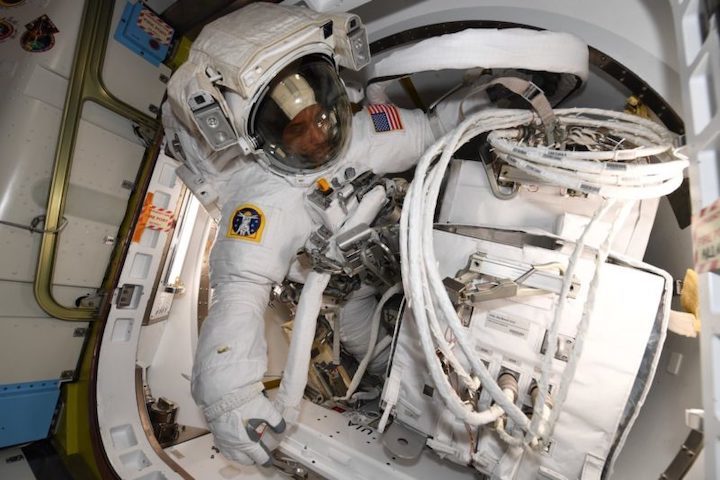
Almost a full decade since the most recent African-American spacewalk, Expedition 64 astronaut Victor Glover has picked up the baton by wrapping up the first session of Extravehicular Activity (EVA) of his career. Together with Expedition 64 crewmate Mike Hopkins—who was embarking on his third career spacewalk—Glover spent six hours and 56 minutes outside the International Space Station (ISS) on Wednesday.
The two men worked to install the Columbus Ka-Band Antenna (COL-Ka) onto Europe’s Columbus lab and left the new Bartolomeo payloads-anchoring platform in a “partially operational” condition, following an issue with the connection of two of the six power cables.
Ever since Guy Bluford flew STS-8 in August 1983, African-Americans have played a pivotal role in U.S. space endeavors. Twelve men and three women have launched on a total of 33 missions—including Ron McNair, who rode Challenger on her final tragic voyage, on this day in 1986—and totaled almost 400 cumulative days in space, four shuttle commands and a combined 101 hours and 42 minutes of spacewalking time in 16 sessions of EVA.
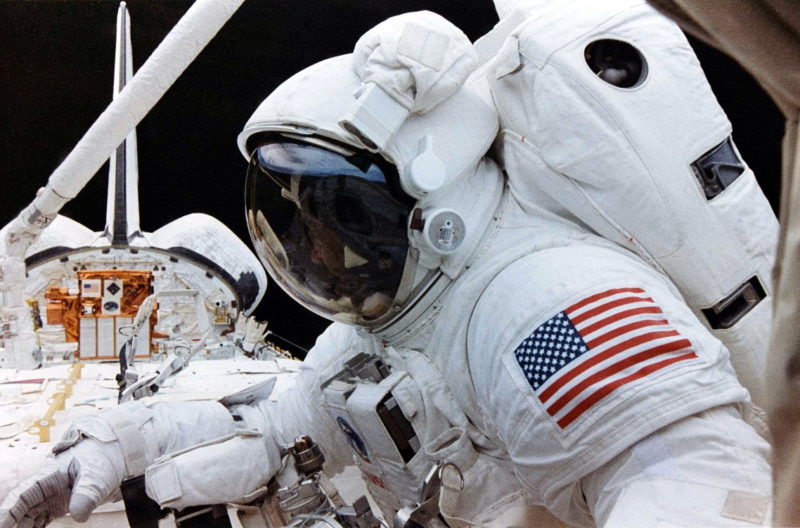
The first African-American spacewalker was STS-63’s Bernard Harris, way back in February 1995, and over the quarter-century since then his feat has been repeated many times. The current head of the leader-board is Bob “Beamer” Curbeam, who logged 45 hours and 34 minutes in seven EVAs across his astronaut career and still resides in the Top 20 most experienced spacewalkers of all time. Before Glover, the last African-American to fly (and spacewalk) was STS-133’s Al Drew, way back in spring 2011.
But Glover, for his part, started setting records of his own within weeks of his mid-November launch to the ISS aboard Dragon Resilience. On 28 December, six weeks into his tenure as part of Expedition 64, he passed Stephanie Wilson’s cumulative record of 42 days, 23 hours and 46 minutes to become the most flight-seasoned African-American spacefarer. And on Monday, he passed 70 days into his six-month increment aboard the station.
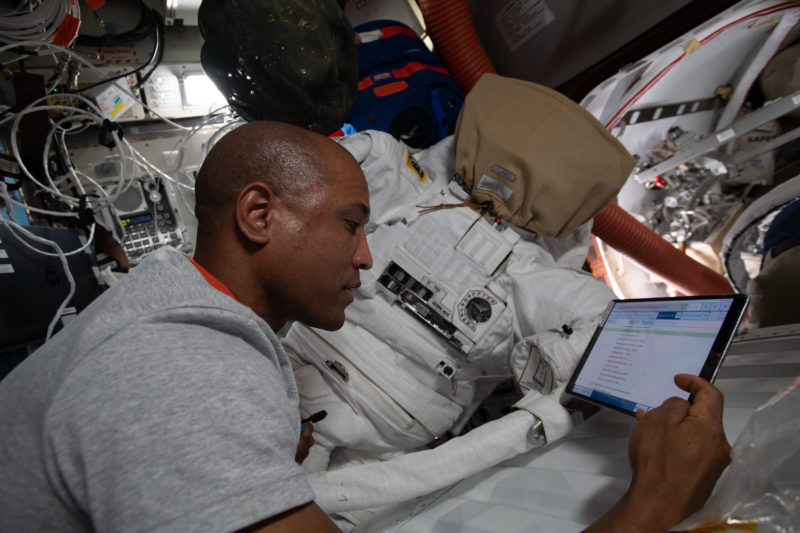
As outlined in AmericaSpace’s preview article, preparations for a group of four EVAs over the coming weeks have been in the works for some time. Last month, following the arrival of a new Extravehicular Mobility Unit (EMU) aboard SpaceX’s CRS-21 Dragon cargo ship and the return of another suit to Earth for maintenance, the U.S. Operational Segment (USOS) members of Expedition 64 spent a considerable period of time getting the Quest airlock ready for EVA duty.
Space suits were serviced, tools were assembled, coolant loops were scrubbed and procedures reviews were undertaken in tandem with ground-based EVA specialists. Wednesday’s EVA day started early, as NASA astronaut Kate Rubins and Japan’s Soichi Noguchi assisted Hopkins and Glover into their suits and pressed smartly through the final preparations to send them outside.
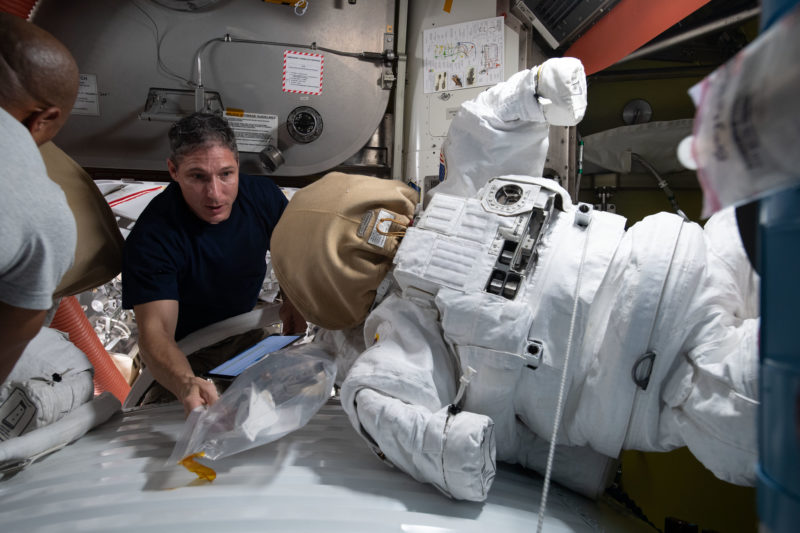
With an anticipated start-time of 7 a.m. EST, the outer hatch of Quest was open and the spacewalk officially got underway more than a half-hour ahead of schedule at 6:28 a.m. EST. And for Russian cosmonaut Sergei Kud-Sverchkov—like Glover, a first-time spacefarer on Expedition 64, and having also recently completed his first career EVA—it was an exciting moment.
“Today @Astro_Illini and @AstroVicGlover will make the first of a series of spacewalks for the International @Space_Station maintenance,” Kud-Sverchkov tweeted. “For Victor, this will be the first EVA in his career! Congratulations!”
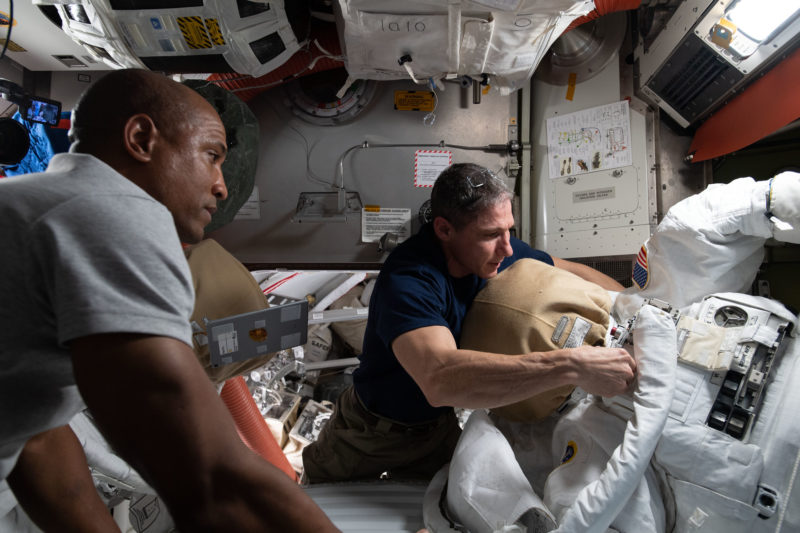
And Glover certainly hit the ground (or “space”) running, hauling the European Space Agency’s (ESA) Columbus Ka-Band Antenna (COL-Ka) out of the airlock and handing it off to Hopkins. The British/Italian-built COL-Ka is about the size of a small refrigerator and will provide data speeds of up to 50 Mbits/sec for downlink capability and up to 2 Mbits/sec for uplink capability, through the European Data Relay System (EDRS). This is expected to yield a direct link between Columbus and control centers in Europe at home-broadband data speeds, “delivering a whole family’s worth of video streaming for science and communications”, according to ESA.
Since its arrival at the ISS aboard the “rip-roaring” STS-122 flight of shuttle Atlantis in February 2008, Columbus has been almost entirely dependent upon U.S. systems for its data needs, but the addition of COL-Ka will offer fast and independent communications “for another decade to come”. It is also expected to serve as a pathfinder for the ESA-built European System Providing Refueling, Infrastructure and Telecommunications (ESPRIT) module, an integral component of the Lunar Gateway.
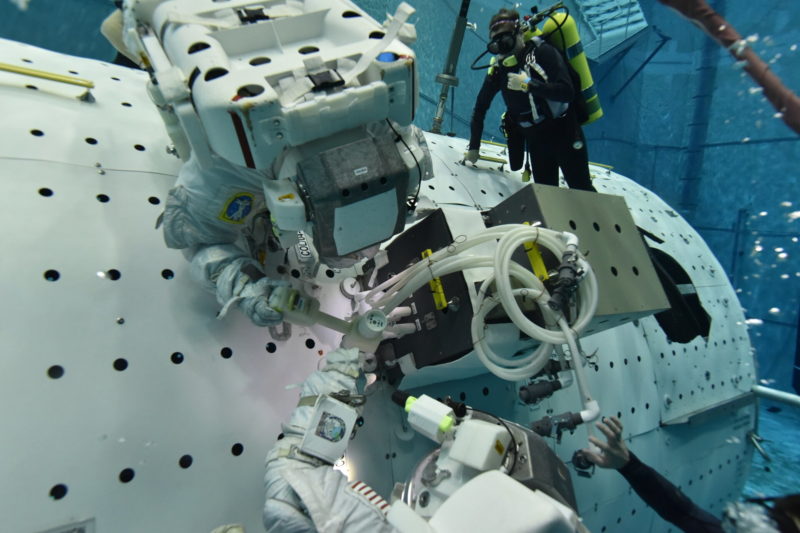
COL-Ka was delivered to the station aboard Northrop Grumman Corp.’s NG-13 Cygnus cargo ship in February 2020. Hopes of installing it last spring met were indefinitely postponed, however, as Commercial Crew Program delays forced the ISS to operate for several months on a “skeleton” staff of only three crew members. But with the arrival of regular Commercial Crew operations in the second half of 2020—and a present ISS increment of seven people—the availability of U.S. Operational Segment (USOS) personnel to support the EVA is now in place.
Working swiftly, Hopkins followed a translation path from Quest out to Columbus and began work to prepare for the COL-Ka installation. Meanwhile, Glover moved to the External Stowage Platform (ESP)-2—situated on the port side of the airlock—to set up an Articulating Portable Foot Restraint (APFR) and board the station’s 57.7-foot-long (17.6-meter) Canadarm2 robotic arm, operated by Kate Rubins. He then proceeded with the COL-Ka to the Columbus work site to join Hopkins. Within the first 90 minutes of the spacewalk, the two men had COL-Ka firmly in place.
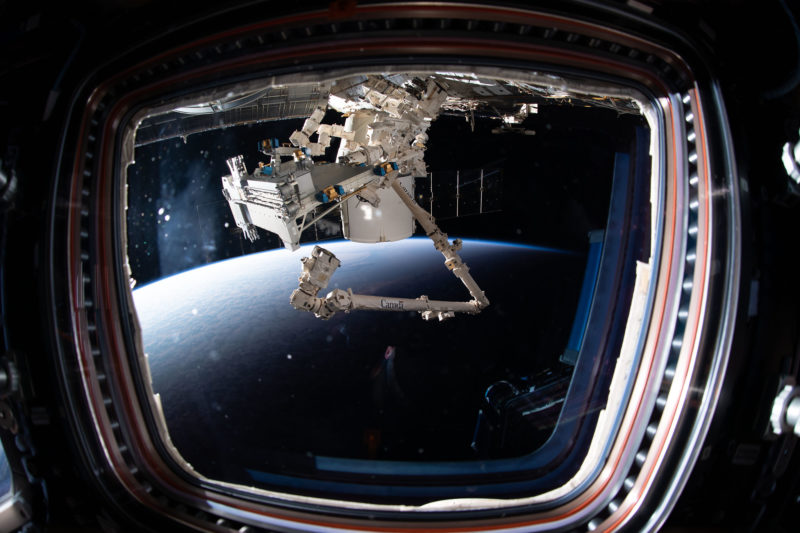
Their next step was to activate the 1,032-pound (468 kg) Bartolomeo payloads-anchoring platform, which arrived at the ISS aboard SpaceX’s CRS-20 Dragon cargo ship last March and was installed onto the forward-facing side of Columbus by ground-commanded robotics early last April.
Fabricated by Airbus Defence and Space, its name honors the Italian spelling of Christopher Columbus’ younger brother, the Genoa-born Italian explorer Bartholomew Columbus (1461-1515). And the mechanized Bartolomeo affords power management, payload commanding, data management, storage and downlink capabilities, as well as flight environment determination functions for a wide range of experiments and facilities.
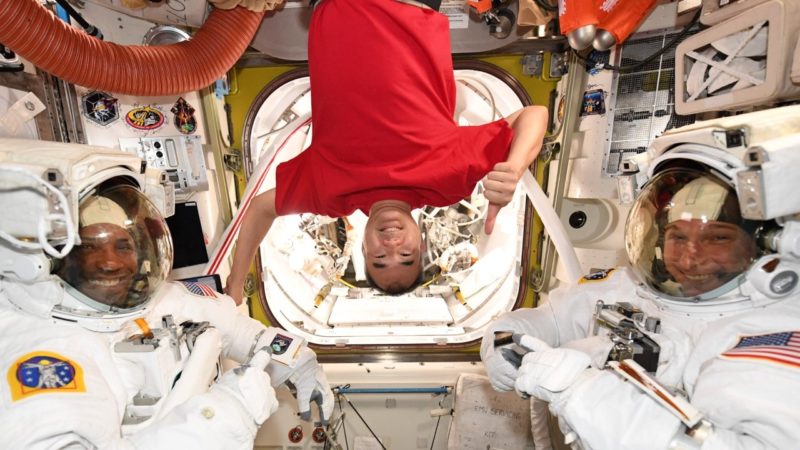
Hopkins and Glover’s task was to open up a set of clamps to remove electrical and other cables to activate Bartolomeo. However, the two men ran into difficulties with the cable connections, prompting Mission Control to ask Hopkins to disconnect, inspect and reconnect a couple of COL-Ka cables. Next, as planned, they detached the antenna’s now-unneeded cover and Glover—from his perch on Canadarm2—jettisoned it into space.
Whilst this work was ongoing, COL-Ka’s heaters came alive and the spacewalkers managed to connect four of the six Bartolomeo cables, positioning it in what NASA described as “partially operational and in a safe configuration”, with an expectation that the final two cables will be configured on a future EVA.
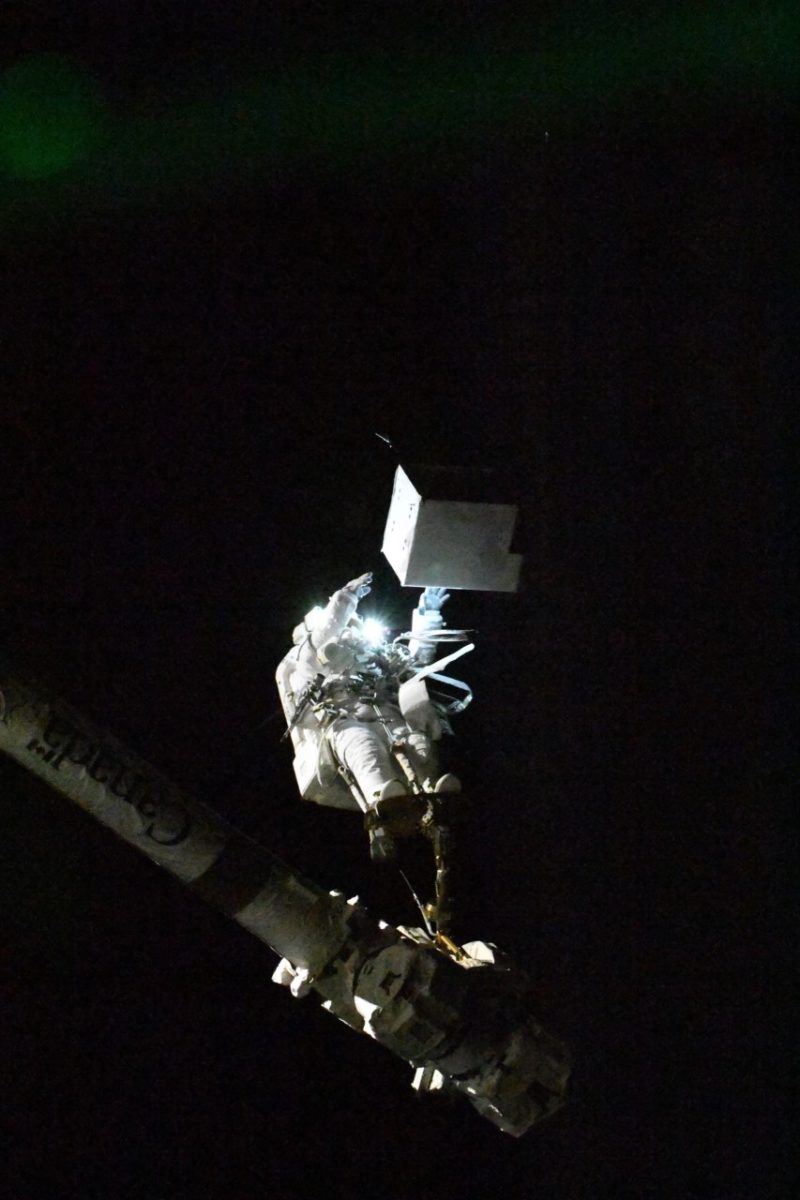
Pressing on, Hopkins and Glover worked to remove a pair of “H-Fixtures” on the far-outboard port-side P-6 truss, in readiness for the installation of ISS Roll-Out Solar Array (iROSA) upgrades later this year. As outlined in a recent AmericaSpace article, a total of six iROSAs will partially cover and “shadow” six of the station’s eight legacy Solar Array Wings (SAWs). The first iROSA work will focus on P-6, whose twin Power Channels—designated 2B and 4B—are the oldest currently in service on the space station.
With the successful removal of the H-Fixtures, the way is now clear for Glover and Kate Rubins to perform an EVA later this spring to fit a “modification kit” in advance of the actual iROSA installation. The “mod kit” for the P-6 upgrade was delivered to the ISS last October aboard Northrop Grumman Corp.’s NG-14 Cygnus cargo ship, with the actual iROSA arrays set to arrive in May 2021 aboard SpaceX’s CRS-22 Dragon.
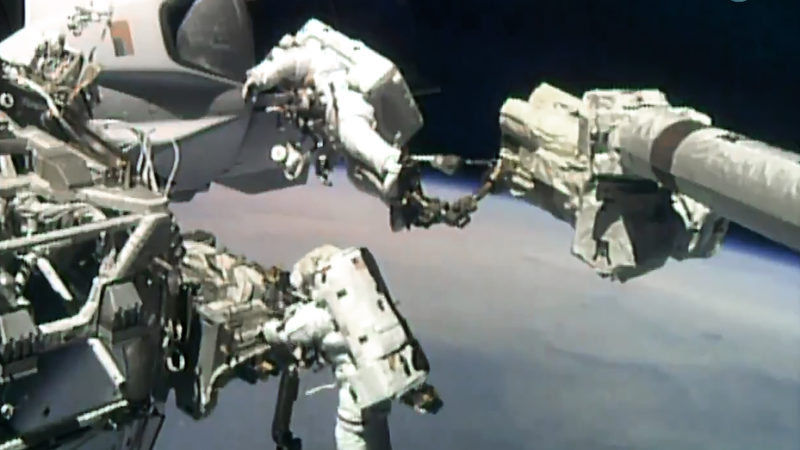
Returning inside Quest at 1:24 p.m. EST, Hopkins and Glover wrapped up yesterday’s work in six hours and 56 minutes. With three EVAs now under his belt, Hopkins has logged a career total of 19 hours and 54 minutes outside the space station, having performed two previous spacewalks in December 2013. The pair are slated to venture outside again on Monday, 1 February, the first objective of which will complete a four-year-plus campaign to replace 48 aging nickel-hydrogen batteries with 24 smaller, lighter and more capable lithium-ion units.
Although all batteries were replaced during 11 spacewalks between January 2017 and last July, one of the lithium-ion units—located in the port-side P-4 truss—blew a fuse in April 2019, shortly after its installation, and was replaced temporarily with an aged but functional pair of nickel-hydrogen batteries. A replacement lithium-ion battery arrived at the station aboard SpaceX’s CRS-19 Dragon cargo ship in December 2019.
According to Vincent LaCourt, NASA’s EVA flight director for the 1 February spacewalk, preparations for the battery changeout were due to get underway last night, with the gradual discharge over a two-day period of the nickel-hydrogen batteries. This will be followed by a couple of days of ground-commanded robotics to remove the old batteries and install the new lithium-ion battery in its place.
Then on Monday, Hopkins and Glover’s task will involve the movement of an adapter plate to enable electrical connectors to be installed to the new battery. The spacewalkers are also expected to fit a high-definition camera onto the U.S. Destiny lab, replace components of the camera system on the robotic arm of Japan’s Kibo lab and remove a H-Fixture on the P-4 truss.
Quelle: AS
